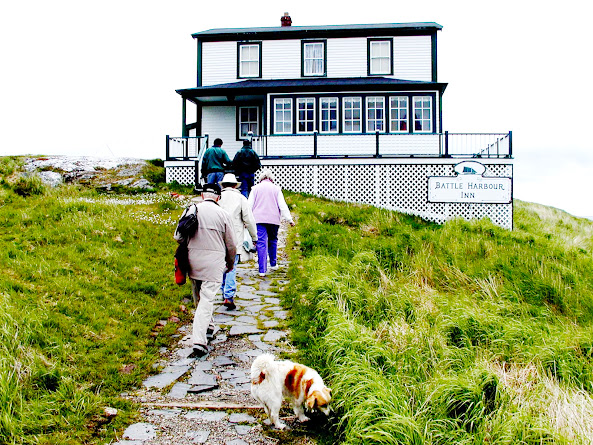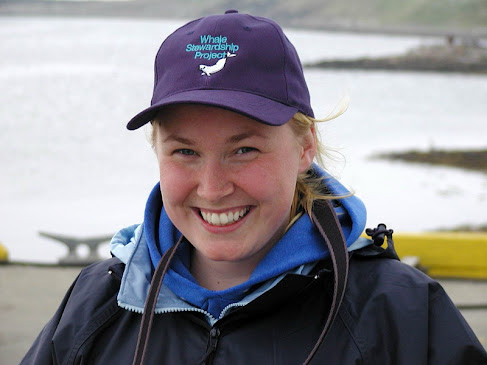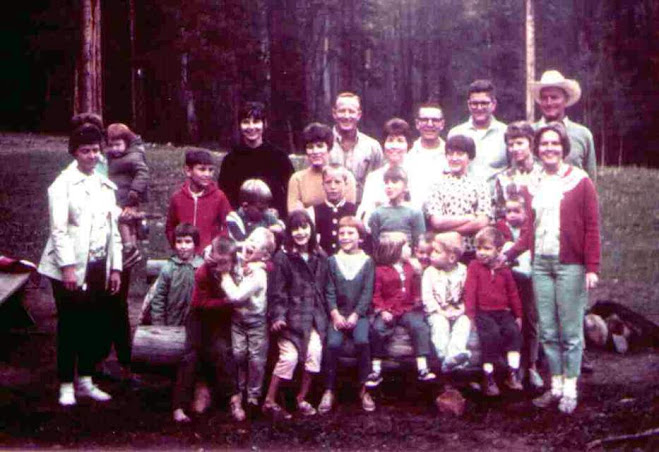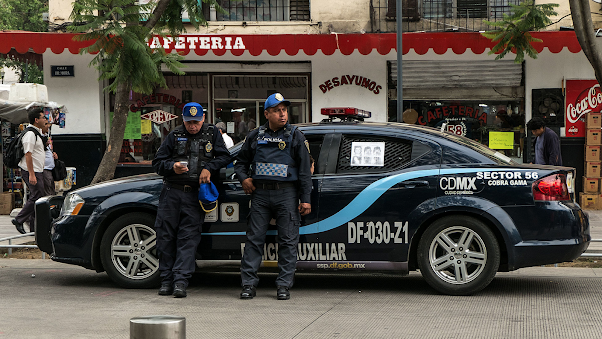Where Icebergs Go To Die
Battle Harbour, Labrador
July 15, 2002
 |
| Dying Iceberg |
Views like this can be seen from Battle Harbour Island -- the "Iceberg Capital of the World".
 |
| Battle Harbour Island |
 |
| Battle Harbour renovated buildings |
Standing on a large, smooth, wave- and ice-worn rock beside a tiny cove, we watched Minke and Humpback Whales cavort only 30 to 60 feet away. Well, maybe they were not actually “cavorting” – they were in dead serious pursuit of small Caplin fish. Down in water so clear that we could see the bottom in about 3 fathoms (18 feet) of water, large schools of these small fish were darting frantically as they tried to escape the gaping mouths of the whales. Having eaten whole, smoked, 5-inch-long Caplin, I can understand why the whales savor them – except that the head is sorta crunchy. Some of the smaller Minke Whales came very close and swerved at the last minute to attack schools trying to hide close to the rocks. They banked like an airplane, showing their pink undersides above the water line. The water gurgled as they passed and left a curved wake on the water surface. The Minke made few sounds during this feeding, but the much larger Humpbacks sometimes made a noise something like a bellowing bull when they surfaced and blew. At a very close range, we could sometimes look down into the blowhole that seemed large enough to place a man’s fist into each one of the two-sided apertures. The Minkes surfaced, blew and rolled forward into a dive quickly. They exposed their cat-claw-shaped dorsal fin, whereas the Humpbacks made a much larger spout and exposed their back and blunter dorsal fin for longer periods of time.
 |
| Stinky Minke Whale |
 |
| Whale and Iceberg |
Humpbacks usually resurfaced and blew again two or three times before finally diving for a long time. On this last dive, they often raised their entire tail out of the water as if to wave goodbye. One of the Humpback Whales swam on its side with one of its long, white flippers held high out of the water. It slapped the surface of the water with this flipper several times before diving back into the depths. Some of the folks watching these behaviors claimed that they could smell the bad breath of the Minke Whales when they blew, and others were so close that they were sprayed with water from the spouts. It was a fantastic, all natural show!
We were spending the night in the historical, informal capital of Labrador – a place called Battle Harbour. It is a small island that occupies the most eastern part of Labrador and is an old fishing village founded by the English in the 1770s. Of the places we have visited in the Canadian Province of Newfoundland and Labrador, Battle Harbour ranks on the top for us. It can be reached from Mary’s Harbour after a scenic, one-hour boat ride past several other islands, icebergs, whales and marine birds. Mary’s Harbour has been relatively isolated and could be reached only by boat until last year when a new, gravel road was built from Red Bay.
 |
| Win and Pat on boat to Battle Harbour |
There are several features of this island that make it very attractive. First, it is nearly free of Blackflies. On the surface, this may sound ludicrous – but in fact, biting Blackflies are a very serious problem in Labrador. When driving on the road to Mary’s Harbour, we sometimes stopped to look for birds. We soon found that, in spite of covering ourselves in Deet insect repellent, the hoards of Blackflies were such an irritant that we began to watch for birds only through the rolled up windows of the car. Blackflies are one reason that the population of all of Labrador is only about 30,000 people – less than live in College Station, Texas. Most folks live along the shore or on islands where the Blackflies are less threatening. The response of the Newfoundland tourist industry to Blackfly complaints is that “Blackflies are a sign of clean air.”
About ten years ago, when the Canadian Government imposed a moratorium on the Codfish fishing industry of Canada, folks who had lived their lives in Battle Harbour, left to make a living elsewhere. The over-200 year history of the Island appeared to be near an end. Many of the great old buildings, that were needed to maintain a large fishing industry on this island, began to fall into disrepair. But a concerned group of Canadians determined that the history of Battle Harbour should not be lost, formed the Battle Harbour Historic Trust in 1990 to restore, develop and promote Battle Harbour. Almost twenty of the old buildings have been renovated and restored with careful attention to detail so as to maintain the historic integrity of the structures.
Battle Harbour was the largest settlement on the Labrador coast and served as the unofficial capital of Labrador for many years -- starting in the 1700s.
When Pat and I first read about this place, we were not so sure that we would find it of major interest. After all, we had seen lots of old fishing ports during our travels through Newfoundland. However, to actually walk the waterfront along the tickle (waterway) and harbor of this place was a special treat. The displays at the various buildings, that explain the importance and history of the various structures, were well-written and informative. It was certainly a challenge to understand the colloquialisms spoken by our guide.
Learning about the Cod and Salmon fisheries was very interesting, but the town and harbor are also steeped in some interesting history. Battle Harbour also served Robert E. Peary and Frederick Cook in their exploration of the North Pole in 1909. Peary wired the details of this expedition from the Marconi wireless station in Battle Harbour to the world through the New York Times. Cook, upon returning from his expedition, announced the news of his successes to the world at Battle Harbour. These announcements garnered the attention of the world press and captivated the attention of people worldwide. The rivalry and controversy that attended these explorers are of continuing interest today.
 |
| Pat with Titanic Pose |
When we landed on Battle Island, we were greeted by Mike Earle, the Resource Curator, who served as our very generous guide for the day. Mike proved to be a very charismatic, energetic and informative guide. As we looked out across the icebergs, he explained that the biggest iceberg in recorded history recently broke off of Greenland. It was about 22 miles wide and 52 miles long – about the size of Rhode Island. It has since broken up again so that the largest pieces are now a mere five miles long. It has been estimated that when this iceberg fell into the ocean, the level of all oceans in the world rose about one millimeter.
 |
| Mike Earle |
A Battle Harbour brochure had informed us that some old cottages had been part of the renovation process and that visitors could stay overnight in these habitations. We found the Isaac Smith home of considerable interest because it is reputed to be the oldest wooden home in Labrador – and we could spend the night there for only $100 Canadian – about $65 US. The house is lit by old lamps and heated by a wood-burning, kitchen stove. A bunkhouse and inn also provide rooms for overnight guests, so we did not make reservations. Luckily, all of these facilities were available for the night when we arrived. When Mike showed us the Smith house – we were smitten.
 |
| Isaac Smith's Kitchen |
He showed us the kitchen window that was still unpainted after new panes had been installed this spring. Seems that a hungry, 700-pound Polar Bear broke the window with its paw during the winter when looking for food on the island. Because of a warm winter, the ice in the Labrador Sea broke up earlier so that the Polar Bear was having little success capturing seals. Although Battle Harbour is uninhabited during winter, a couple of seal hunters happened by and tried to land at the dock. The Polar Bear would not let them land so, in their words, they “fired some rounds into the air to scare it.” Mike claimed that it is illegal to kill Polar Bears in Canada. But a short time later, he found the bear a short distance away in the cemetery. It was dead and the cause of death was bullets. When the game warden asked Mike who shot the bear, Mike would not tell them. “If you rat on your friends, you may get a bullet in the back of your head,” he said.
Other than the fact that the Smith Home is occasionally visited by Polar Bears, it is a truly charming, small, two-story structure that will sleep six, and is decorated according to the tastes of the old days. We were treated to a dinner at the inn featuring locally caught, crowberry-smoked salmon that was absolutely delicious. A fire was glowing in the kitchen stove when we took occupancy in the evening. We wander around the house, admiring the handiwork, lit the lamps, took a shower and went to bed. Temperatures reached about F 50 during the night, but warm blankets kept us snug so that it was not necessary to stoke the fire all night. In the morning, I popped out of bed and built a fire that soon had the little house reasonably warm.
 |
| Battle Harbour Inn |
As I hiked the tundra-covered hills in the early morning sunlight, I watched the parade of icebergs and noticed the distance they had moved since last night. Way up north on the horizon, two new, giant icebergs – that were not visibly last evening – were rounding a point. An American Pipit, somewhat alarmed that I was maybe too near its nest, moved so close that I could identify the insect in its beak as a Crane Fly. Savannah Sparrows showed off their yellow faces. The sun warmed my body and the scenery warmed my spirits.
When the boat arrived in the morning, it brought a group of Dutch Air Force pilots who are training at the old American Air Base in Goose Bay, Labrador. They spent the day on the rocks on the southern and northern ends of the island, taking photos of the whales.
In the evening, while strolling along the waterfront, I chatted with a fellow who identified himself as Victor Belben. He asked if we were interested in taking a boat trip around the harbor. He explained that he was a large-equipment operator from L’Anse-au-Loop and that his wife, Doreen, owned another old family home here in Battle Harbour, where Doreen had lived as a child. She explained that she is the great-great-granddaughter of Isaac Smith, who built the cottage where we were staying. Victor and Doreen visit the old home a few times each summer. We hopped in his boat and took a spin of the harbor and another neighboring harbor as the sun was setting. My offer to at least pay for gasoline was refused. Later, we visited their charming old home, chatted easily and probably overstayed our visit. Victor explained that he had been a fisherman and still owns a 40-foot boat. He said that when fishing for the scallop, the 1000-pound metal bar that scrapes the scallops off the ocean floor also destroys almost everything in its path – much like a bulldozer on land. Asked if he is better off now than when he was fishing, he replied, “Yes.”
The next morning, Victor asked if we were interested in taking a boat tour out to visit an iceberg. Pat was hesitant, but I was excited at the prospect. His small, open boat bobbed like a cork in the swells of the North Atlantic. The morning sun glistened bright white off the about 100-yard-long iceberg. The deep blue color of the densely-packed glacial ice was most obvious in a couple of layers and the ice immediately below the waterline was a bright green. We collected some pieces of glacial ice that had broken from the larger iceberg and then circled the berg – carefully keeping a safe distance from it. Icebergs can be very dangerous when they crack and roll over. About 9/10 of the iceberg is underwater so that when they roll, they create considerable turbulence. We heard the loud cracks of the icebergs out in the sea several times from Battle Harbour. We were told that when a very large iceberg cracks, the sound can be so loud it will shake your teeth. Victor returned around the entire island, where we observed a group of about 25 Harp Seals.
The world is a better place with Victor Belben in it.
 |
| Iceberg |
Many fishermen supplement their fishing income by hunting seals in the winter. Mike had previously explained that these seals eat lots of fish and compete with the fishermen. According to Mike, the seals eat much more fish than fishermen take, and the seals are very abundant. One might conclude that seals are vermin, much in need of eradication. He chided Bridget Bardot and others who spray-paint the fur of young seals to make them worthless to hunters. But, the image of hunters shooting and clubbing those cute, round-eyed, baby seals is very repulsive to folks who live in cities and eat only meat from animals killed by someone else. According to Victor, a seal pup is called a “white coat” and then matures into a “raggedy jacket” and then into a “beater.” Hunters are legally allowed to hunt raggedy jackets and beaters. Seal skins are currently bringing about $95 each. One hunter brought in 1800 seals and made a tidy sum of $171,000. No wonder that some locals are building large, two-car garage homes on the waterfront. Historically, seals were hunted for their oil, which was burned in lamps in Europe. A mature seal may yield 6 gallons of oil.
One factor that made our trip to Battle Island so great, was the fact that the weather was very good. We enjoyed relatively smooth seas on the boat ride to and from the harbor. We added the Black Guillemot to our life list of birds on the trip. The sun shone brightly and the air was very clear during most of our stay. We will remember the excitement of watching whales very close to shore, big and beautiful icebergs, staying in a historical fishing home and observing the very interesting and historical island fishery. But, maybe the vision I will most remember is the sight of the Dutch Air Force boys standing on rocks so close to the water that they were in some danger of being washed off by a large wave, thrusting their fists in the air with excitement when a whale surfaced and blew 10 or 20 feet from their feet. Or maybe the sight of Mike’s little dog, Lucky running down to the water’s edge when a whale surfaced – barking and growling as if he were going to attack, kill and eat a whale. These whales could probably swallow the dog in one gulp without even chewing.
One of our major disappointments on this trip to Battle Harbour was the fact that the batteries on my camera died on the second day and we had no replacements. We had not made plans to stay overnight on the island, so I thought my batteries would hold up for the trip. Anyway, when I tried to photograph the whales up close on the second day, the batteries died. I was nearly desperate to capture this action on film so I ran to the park offices and begged for some batteries. I would easily have paid double or triple the going rate, but nobody had any. At the time, we decided that taking the boat ride back to Mary’s Harbour just to buy batteries was out of the question. One of the native Inuit girl workers even checked all the drawers in her room but to no avail. Consequently, we got no photos of our boat ride with Victor Belben, the whales or other scenic photos. However, the photos that I got before the batteries died are now my prized possessions.
Table of Contents: https://www.blogger.com/blog/post/edit/6813612681836200616/3382423676443906063?hl=en








